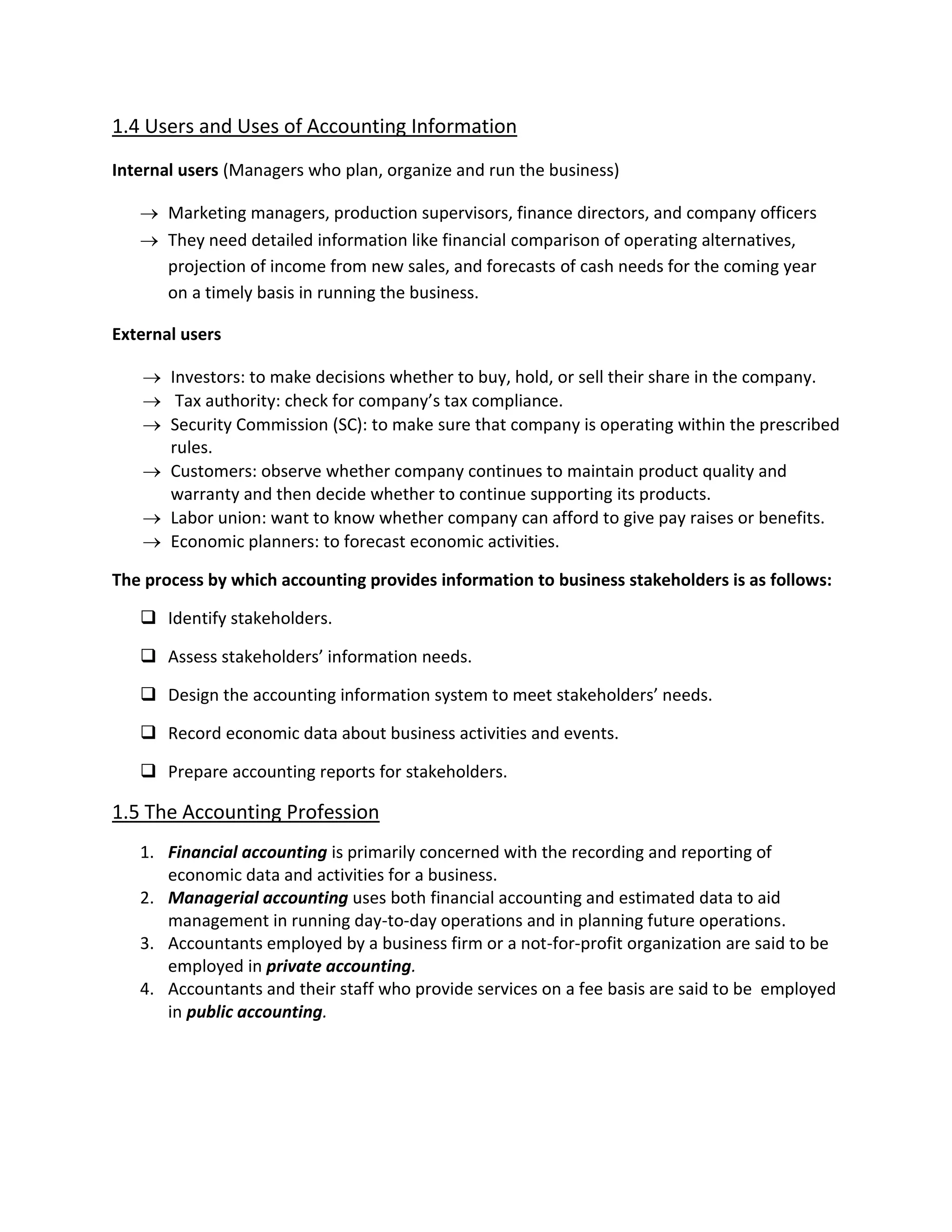This document provides an overview of business and accounting. It defines business, customers, profits, and stakeholders. It describes the nature of businesses as service, merchandising, or manufacturing organizations. It also outlines common business forms including proprietorships, partnerships, corporations, and limited liability companies. The document then discusses the roles of ethics in business and accounting. It defines accounting and describes its purposes and fields. It outlines internal and external users of accounting information and how accounting provides information to stakeholders. It also provides an overview of the accounting profession and generally accepted accounting principles.




